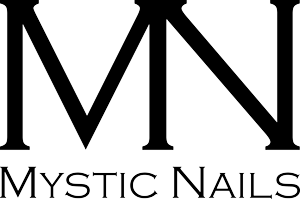The GDPR for Nail Artists: friend or foe?
Introduction
The General Data Protection Regulation (GDPR) has been in force since 2018 and has had a significant impact on all European businesses, including small beauty businesses such as nail salons.
Our aim is to clarify the principles and requirements of the GDPR and provide beauty businesses with concrete advice to make it easier for them to comply with the Regulation's requirements.
Chapter 1: What is the GDPR and Why is it Important for Nail Designers?
GDPR, or General Data Protection Regulation, is an EU law that is binding in all Member States from May 2018. The Regulation aims to harmonise data protection rules across Europe and strengthen the protection of natural persons' personal data.
In nail salons, we handle personal data every day: clients' names, addresses, phone numbers and even health information. Under the GDPR, any information that can identify an individual is considered personal data. This means that nail salons must treat this information with care, store it properly, protect it and manage it.
Data protection is not only a legal obligation, but also an opportunity to build trust. A well-managed privacy policy not only complies with the law, but also builds customer trust. Our customers will know that we take the protection of their data seriously, which can increase the attractiveness and competitiveness of our business.
Chapter 2: Interpretation of the Privacy Principles and Obligations for Practitioners
Description of the Privacy Principles
The GDPR sets out six basic data protection principles that all data controllers, including nail salons, must comply with:
- Fair and lawful processing.
- Purpose limitation: data must be collected only for specified, explicit and legitimate purposes and may not be used for any other purpose.
- Data minimisation: only data necessary for the purpose for which it is collected and stored may be collected.
- Accuracy: Data must be accurate, up-to-date and updated as necessary.
- Limited storage: data should only be stored for as long as the initial purpose requires.
- Integrity and confidentiality: Appropriate security measures must be taken to ensure the protection of data.
Data Processing Obligations in Practice
There are specific obligations for nail technicians to comply with data protection principles. Here are some examples of how they can apply these principles:
- Data collection: when a new client comes to our salon and we collect data about them (e.g. name, phone number), we must clearly inform the client of the purpose for which we are asking for this information and how we will handle it.
- Data storage.
- Updating data: if a customer changes their details (e.g. moves house or gets a new phone number), it is important to update our database so that we do not store outdated or inaccurate information.
Eligibility and Obligations
Under the GDPR, customers have a number of rights in relation to the processing of their data, including:
- Right of access.
- Right to rectification: They can request that outdated or incorrect data be corrected.
- Right to erasure: In certain circumstances, they can request the erasure of their data.
These rights and obligations mean that nail salons must be prepared to respond appropriately to such requests and to amend or delete them if necessary.
Chapter 3: GDPR and the Daily Operations of Beauty Salons
How can the GDPR be translated into Business Practice?
For nail salons, the GDPR is not only an administrative burden, but also an opportunity to improve their customer service processes and increase customer confidence. Here are some steps that can help you integrate data protection requirements into your daily work:
- Create a clear and understandable privacy notice that informs customers about what data we collect, how we use it and how we protect it.
- Data Management Processes - Establish policies on data collection, storage, access and deletion processes to ensure that these processes are always consistent.
Chapter 4: Risk Management and Security Measures
Security Protocols and their Effects
Beauty salons should invest in appropriate IT security solutions to protect client data. This includes anti-virus software, firewalls and regular backups. In addition, it is important to have physical security measures in place, such as lockable cabinets for storing clients' printed data.
Chapter 5: Summary and Steps to Achieve GDPR Compliance
Summary of Tips and Advice
GDPR compliance requires a continuous effort on the part of nail salons. It is important that they regularly review and update their privacy practices as necessary. If you have multiple professionals, it is recommended that you appoint a Data Protection Officer to monitor changes to the regulation and ensure that all aspects of the salon are compliant.
As well as complying with data protection regulations, remember that these measures add value to your salon. GDPR compliance is not just about avoiding penalties, it is an opportunity to increase our clients' confidence and improve our business results in the long term.
Awareness of GDPR and continuous improvement of our privacy practices will help us maintain our clients' trust and ensure the long-term success of our business in the beauty industry.





